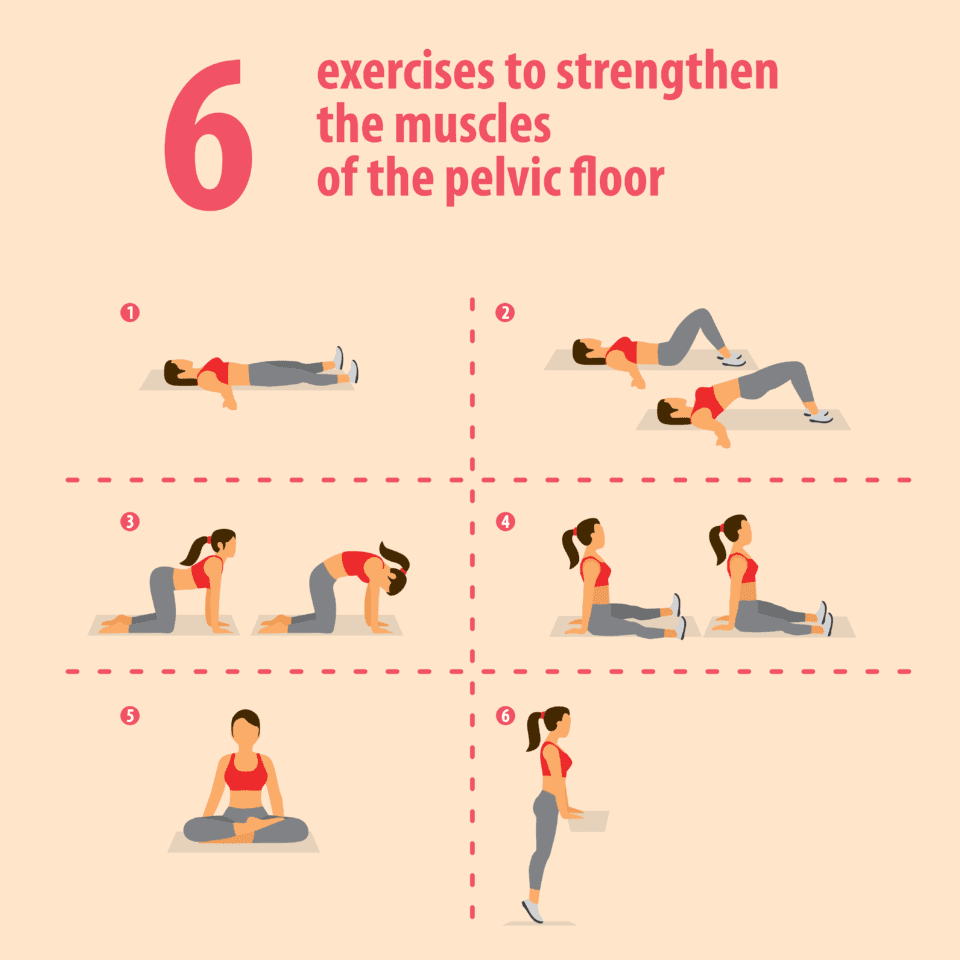Pelvic Wellness During Pregnancy: Why it’s Important & How to Improve It

We’ve teamed up with What to Expect While You’re Expecting to bring you another great guest writer post.
The pelvic floor is a sling of muscles and ligaments that stretch from the pubic bone to the spine. The pelvic floor is often compared to a trampoline as it will stretch when there is weight on top of it but return to normal after the weight is no longer there. When you are pregnant, your pelvic floor has to accommodate the added weight of your baby for a prolonged period. This puts a great deal of strain on your pelvic floor muscles which can weaken and lose their ability to bounce back.
The Importance of Pelvic Wellness during Pregnancy
The increasing weight of your baby, combined with the weight of the amniotic fluid and placenta puts a strain on the pelvic floor muscles. Furthermore, your body produces a hormone called relaxin which relaxes the ligaments in the pelvis which results in additional strain on the pelvic floor muscles. This is why pelvic wellness during pregnancy is very important regardless of childbirth method – vaginal delivery or Cesarean Section. Weak pelvic muscles make it harder to control the sphincters of your bladder that prevent urine from escaping. This is why you are likely to experience incontinence (urine seepage) during the second and third trimester, especially when you cough or sneeze.
Weak pelvic muscles also increase your risk for several types of pregnancy pelvic pain, including round ligament pain and sacroiliac joint pain. Round ligament pain affects up to 30 percent of pregnant women and typically occurs on the right side of the pelvis, although it can also affect the left side or even both sides. The round ligaments are cords of connective tissues that help to keep the uterus in place by connecting it to the groin. Weak pelvic floor muscles can put undue strain on the round ligament and can trigger round ligament pain, especially when you cough or sneeze. The pelvic floor muscles also stabilize the SI (sacroiliac) joints which are weight-bearing joints. Weak pelvic floor muscles decrease the stability of these joints which results in SI joint pain. The pain is often deep and occurs at the dimples of your lower back and may spread to your buttocks or the sides of your thighs.
Good muscle tone and elasticity of the pelvic floor will increase the likelihood of an easier second stage of labor. It will also reduce the risk of postnatal complications including surgery to correct uterine prolapse. It is important to note that a vaginal delivery is more demanding on your pelvic floor compared to a C-Section and you are also more likely to suffer from long-term pelvic floor issues including stress urinary incontinence. Ensuring pelvic wellness during pregnancy will improve your chances for a healthy pelvic floor later in life.
How to Improve Pelvic Wellness during Pregnancy
Use a Maternity Support Belt
Belly bands are designed to support the abdomen and lower back during pregnancy. These bands can also help to stabilize the round ligaments and support the sacroiliac joint. This reduces the risk and severity of round ligament pain, sacroiliac joint pain, pubic symphysis dysfunction and similar pregnancy health issues. Choose a maternity support belt that is supportive yet soft and flexible with adjustable fastening so that you can use it through all three trimesters. Additional support bands provide extra lift and gentle compression which will help you stay active and exercise throughout your pregnancy.
Maternity support belts that also have compression therapy groin bands offer immediate pelvic and groin pain relief. Groin bands help to reduce pelvic pressure and heaviness and reduces vulvar varicosities –enlarged and twisted veins of the vulva. Vulvar varicosities are a common problem during pregnancy and it is estimated to affect over 20 percent of pregnant women. Groin bands also provide compression support for prolapsed organs and Symphysis Pubis Dysfunction (SPD during pregnancy), commonly known as pelvic girdle pain. Add-on shoulder straps for a maternity support belt can help to improve pelvic wellness as it helps to take the pressure off the pelvis and lower back.
Practice pelvic floor exercises daily

Pelvic floor muscle training exercises help to strengthen the muscles of the pelvic floor. You can do these exercises at any time and place but most people prefer to do them while sitting or lying down. When urinating, use your muscles to stop the flow as this will help you identify your pelvic floor muscles. Tighten your pelvic floor muscles for a count of 10 and then relax your muscles for a count of 10 and repeat. Aim for 10 reps done 3-5 times a day and you’re likely to notice in a difference in just 4-6 weeks.
Maintain healthy weight gain throughout your pregnancy
A certain amount of weight gain is normal during pregnancy. However, excess weight gain can increase your intra-abdominal pressure which would weaken your pelvic floor ligaments. As a general rule of thumb, healthy pregnancy weight gain would mean 1 to 4.5 pounds during the first trimester and 1 to 2 pounds per week for the second and third trimester. A healthy diet and exercise plan will help you maintain your body weight and improve your overall health and fitness levels during your pregnancy.
Pelvic wellness is also important after delivery as your pelvic floor muscles slowly recover. Calculate your due date so that you can create a post-natal pelvic wellness recovery plan in advance. Depending on your method of delivery, you might need to wait a few days or weeks to start your recovery routine. Talk to your doctor before you start these exercises to ensure that you are not putting undue stress on these muscles.
Thank you to our guest writers from What to Expect When Your Expecting
